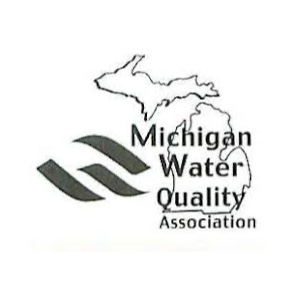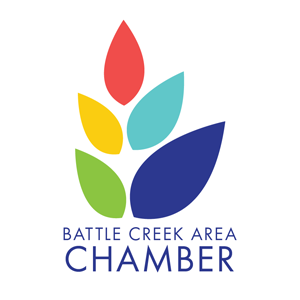Frequently Asked Questions
Besco Water Treatment understands people have questions about our superior products and the bottled water industry. Here we answer frequently asked consumer questions.
-
What is bottled water?
Water is classified as “bottled water” if it meets all applicable federal and state standards, is sealed in a sanitary container and is sold for human consumption. Bottled water cannot contain sweeteners or chemical additives (other than flavors, extracts or essences) and must be calorie-free and sugar-free. Flavors, extracts and essences – derived from spice or fruit – can be added to bottled water, but these additions must comprise less than one percent by weight of the final product. Beverages containing more than the one-percent-by-weight flavor limit are classified as soft drinks, not bottled water. In addition, bottled water may be sodium-free or contain “very low” amounts of sodium. Some bottled waters contain natural or added carbonation.
-
What are the different types of bottled water?
There are several different varieties of bottled water. The product may be labeled as bottled water, drinking water or any of the following terms. The Food and Drug Administration’s (FDA) product definitions for bottled water are:
Artesian Water/Artesian Well Water: Bottled water from a well that taps a confined aquifer (a water-bearing underground layer of rock or sand) in which the water level stands at some height above the top of the aquifer.
Mineral Water: Bottled water containing not less than 250 parts per million total dissolved solids may be labeled as mineral water. Mineral water is distinguished from other types of bottled water by its constant level and relative proportions of mineral and trace elements at the point of emergence from the source. No minerals can be added to this product.
Purified Water: Water that has been produced by distillation, deionization, reverse osmosis or other suitable processes and that meets the definition of purified water in the United States Pharmacopia may be labeled as purified bottled water. Other suitable product names for bottled water treated by one of the above processes may include “distilled water” if it is produced by distillation, “deionized water” if the water is produced by deionization, or “reverse osmosis water” if the process used is reverse osmosis. Alternatively ” drinking water” can be used with the blank being filled in with one of the terms defined in this paragraph (e.g. purified drinking water” or “distilled drinking water”).
Sparkling Bottled Water: Water that after treatment, and possible replacement with carbon dioxide, contains the same amount of carbon dioxide that it had at emergence from the source. (An important note: soda water, seltzer water and tonic water are not considered bottled waters. They are regulated separately, may contain sugar and calories, and are considered soft drinks.)
Spring Water: Bottled water derived from an underground formation from which water flows naturally to the surface of the earth. Spring water must be collected only at the spring or through a borehole tapping the underground formation finding the spring. There must be a natural force causing the water to flow to the surface through a natural orifice. Spring water collected with the use of an external force must be from the same underground stratum as the spring and must have all the physical properties, before treatment, and be of the same composition and quality as the water that flows naturally to the surface of the earth.
Well Water: Bottled water from a hole bored, drilled or otherwise constructed in the ground, which taps the water of an aquifer.
Reprinted with Permission from the International Bottled Water Association
-
What is Hard Water?
Two-thirds of the water on earth is groundwater. As it travels through rock and soil it picks up particles of calcium, magnesium, iron, lead, and other minerals. For 85% of the country, that translates into “hard water.” “Hardness” refers to the amount of calcium and magnesium in the water and is measured in grains per gallon (gpg), where a grain is a measurement of weight, or in parts per million (ppm) (17.1 ppm = 1 gpg). The table below shows some hard water levels.
Here is what an analysis in grains per gallon or parts per million means to you, according to the U.S. Department of the Interior and the Water Quality Association standards:
Grains per Gallon Parts per Million Rating less than 1.0 less than 17.1 soft 1.0 – 3.5 17.1 – 60 slightly hard 3.5 – 7.0 60 – 120 moderately 7.0 – 10.5 120 – 180 hard over 10.5 over 180 very hard -
Why should I use soft water?
Harder on clothes –
Clothes washed in hard water tend to wear out 15% faster than those washed in soft water.
Harder on washers –
The American Water Works Association has shown that washing machines that use hard water can wear out up to 30% faster than those that use soft water.
Harder on dishes –
Hard water can leave an unsightly film buildup on glasses and dishes.
Harder on you –
When you bathe with hard water, deposits are left behind which may dry out skin and leave your hair looking dull. Shaving is also more difficult in hard water. And hard water also leaves a filmy soap ring around bathroom fixtures making bathroom and kitchen cleanup more difficult.
Harder on budgets –
Hard water requires much more soap, shampoo, or detergent than soft water, so your soap products don’t stretch nearly as far.
-
What is the Difference between a Water Softener and a Water Conditioner?
There is no difference between a water softener and a water conditioner. Both terms are used interchangeably within the water treatment industry.




